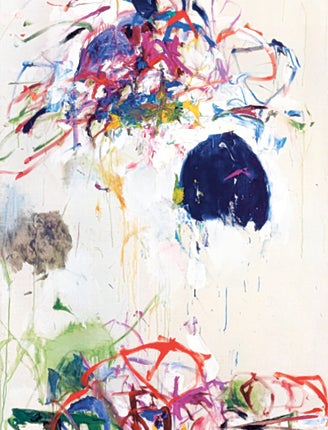Joan Mitchell, Royal Botanic Garden, Edinburgh

Your support helps us to tell the story
From reproductive rights to climate change to Big Tech, The Independent is on the ground when the story is developing. Whether it's investigating the financials of Elon Musk's pro-Trump PAC or producing our latest documentary, 'The A Word', which shines a light on the American women fighting for reproductive rights, we know how important it is to parse out the facts from the messaging.
At such a critical moment in US history, we need reporters on the ground. Your donation allows us to keep sending journalists to speak to both sides of the story.
The Independent is trusted by Americans across the entire political spectrum. And unlike many other quality news outlets, we choose not to lock Americans out of our reporting and analysis with paywalls. We believe quality journalism should be available to everyone, paid for by those who can afford it.
Your support makes all the difference.As the browning petals begin to drop from the flowers in Edinburgh's Royal Botanic Garden, and summer comes to a close, there is no better exhibition to see than the one of paintings by the late Joan Mitchell at Inverleith House in the Garden grounds. Mitchell, who died in 1992, was a late member of the "New York School" of painting, and her paintings are bright concoctions of watery drips and stains with thick brushstrokes, exquisitely composed amalgams of composure and excitement. For such a major figure in abstract painting it is astounding that this is Mitchell's first exhibition in a UK public gallery, but this perhaps has something to do with the fact that she moved to France in 1959, able to continue her abstract painting in the company of Europe's long painting history, but without the constant hype of New York.
The colours and sensations evoked by her paintings often remind one of nature – of flowers, trees and landscapes – although any figurative elements swim in and out of focus. They are more akin to the sensory experience of looking at nature, rather than a representation of it. Sometimes, it seems that those flowers and trees are a gateway to something else. First Cypress (1964) is a dark mass of green oil paint, the shade of the darkest pine needles or wine bottles, almost black. While one side of the canvas is covered in lighter brushstrokes, encompassing elements of cream, custard and emerald, like a glimpse through leaves, for the most part the canvas is a curiously intimidating flat mass of dark green, appearing like a hole or a blockage. Garden Party (1961-62) is a mix of peachier shades and thicker brushstrokes, fading into a background of watered-down colours of pale blue, pink and grey, which almost stain the canvas, calling to mind other American artists such as Helen Frankenthaler and Morris Louis. Untitled (1968-69) is more expressionistic – a blaze of vivid colour seems to swarm above a dark blue vase shape, as though it could be a bouquet captured at its most vivid moment, trying its hardest to live.
The painter Brice Marden once said of Mitchell that "she could make yellow heavy", and there's certainly a heavy yellow or two in this exhibition, most notably in Cypress (Diptych) (1980). A huge field of golden yellow colour spread over two canvases accompanied by a sprinkling of violet, this painting seems to evoke a final full bloom of summer before darkness falls. Some black shapes near the centre blot the landscape – figures, trees, blind spots, or just a resting spot for the eye. This exhibition is a perfect match of location, artist and space. As light softly billows in from the gardens outside, the colours of Mitchell's paintings almost appear to bounce around the space, occasionally drawing you to the large windows. The bright green on a certain painting is mirrored in the grass outside, while an occasional bright hue is picked out in one of the exotic flowers in the botanic gardens. You'll most certainly, after this triumph, see a larger, more comprehensive exhibition of Joan Mitchell elsewhere in Britain in the coming years. Whether you'll ever see one in such an ideally suited location, as nature knocks in at the windows, remains in doubt.
To 3 October (www.rbge.org.uk)
Join our commenting forum
Join thought-provoking conversations, follow other Independent readers and see their replies
Comments